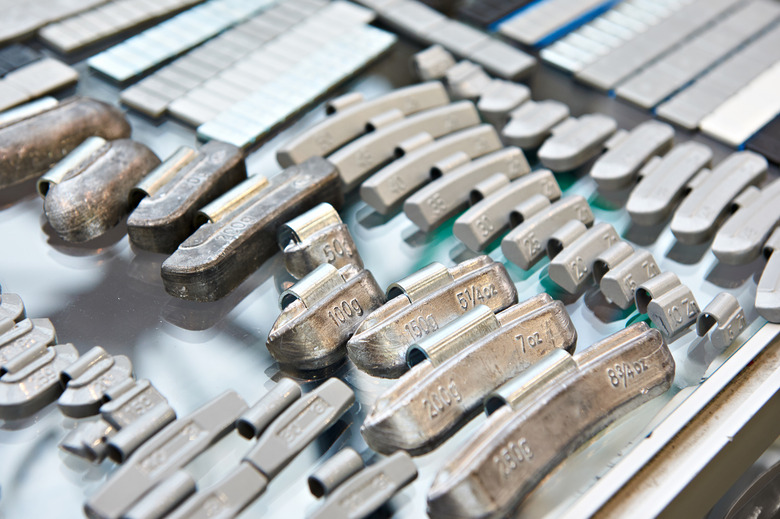How To Figure Weight Of Lead By Volume
Things Needed
- Water
- Beaker with volumetric measurement markers on the side
Each element and compound has a density that relates the weight and volume of that material. Factors such as temperature and pressure can alter the density, but these factors are negligible when dealing with solid materials. Lead has a density of 11.3 grams per milliliter. This density can be used to determine the weight of a piece of lead based on the volume of that piece. Two pieces of lead with the same volume will have the same weight regardless of their shapes.
Step 1
Fill the beaker about halfway full with water. There should be enough water that the piece of lead will be completely submerged, but not enough water that it will overflow when the lead is placed in it.
Step 2
Write down the volume of water in the beaker.
Step 3
Submerge the lead piece completely in the water.
Step 4
Write down the new volume of the beaker.
Step 5
Subtract the original volume of water in the beaker from the volume of the beaker containing the submerged lead. This is the volume of the lead.
Step 6
Convert the volume of the lead to milliliters.
Step 7
Multiply the volume of the lead by 11.3 grams per milliliter, the density of lead. The result is the weight of lead.
TL;DR (Too Long; Didn't Read)
This method can be used only to determine the weight of a piece of pure lead. Metal alloys containing lead have a unique density based on the percentage of lead and other metals used in the alloy. Compounds that contain lead atoms in the molecules that create that material will have a unique density based on the chemical nature of the molecules.
Warning
Skin contact, ingestion and inhalation of lead can pose serious health hazards, but the risk of ingestion and inhalation is unlikely in the procedure of assessing the volume of a piece of lead. Gloves should be worn when handling lead to prevent skin contact.
References
- Engineering; Dr. Joseph Orlins; 2003
Cite This Article
MLA
Anderson, Matthew. "How To Figure Weight Of Lead By Volume" sciencing.com, https://www.sciencing.com/how-5635756-figure-weight-lead-volume/. 12 November 2009.
APA
Anderson, Matthew. (2009, November 12). How To Figure Weight Of Lead By Volume. sciencing.com. Retrieved from https://www.sciencing.com/how-5635756-figure-weight-lead-volume/
Chicago
Anderson, Matthew. How To Figure Weight Of Lead By Volume last modified March 24, 2022. https://www.sciencing.com/how-5635756-figure-weight-lead-volume/
